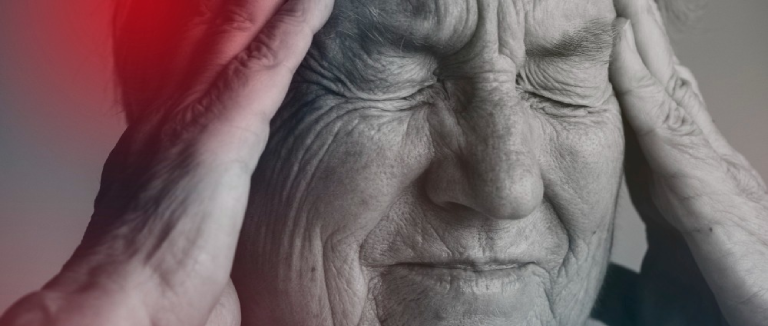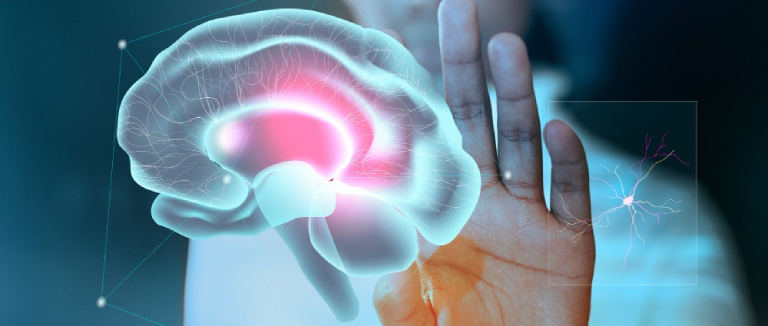What is Stroke?
A stroke is a neurological event that occurs when the normal blood supply to the brain is interrupted, making effective Stroke Care essential. This interruption can result from various causes, but the critical outcome is that brain cells are deprived of oxygen and nutrients, leading them to begin dying within minutes. The loss of blood flow to a particular area of the brain can have immediate and serious effects on different bodily functions. Understanding what it is and how it impacts the brain’s blood supply is vital for timely and effective Stroke Care.

What Are The Different Types Of Strokes?
Strokes are generally categorized into three types: ischemic neurological event, hemorrhagic strokes, and transient ischemic attacks (TIA). But what exactly is a TIA, and what is an ischemic it? Let's explore each type in detail.
What Is An Ischemic Stroke?
Ischemic neurological event account for approximately 85% of all it cases. They occur when a blockage or obstruction in one of the brain's blood vessels reduces blood flow to a specific part of the brain. This lack of blood flow results in damage to the brain cells in the affected area.
What Is A Stroke Caused By Bleeding In Or Around The Brain?
Hemorrhagic strokes occur when a blood vessel in or around the brain ruptures, leading to bleeding in the surrounding area. These neurological events account for about 15% of all cases. Hemorrhagic its are primarily classified into two types: intracerebral hemorrhage and subarachnoid hemorrhage.
What Is A Mini Stroke?
A mini-neurological event, also known as a transient ischemic attack (TIA), is caused by a brief and sudden reduction in blood flow to the brain. The key feature of a TIA is that its symptoms resolve quickly, typically within less than 24 hours.
Symptoms Of Stroke
It symptoms usually manifest abruptly and can vary depending on the it type and the specific brain region impacted. The primary indicators of a it include:
- Face drooping
- Arm weakening
- Difficulty speaking
- Sudden headache
- Numbness
- Difficulty in walking
- Confusion
- Problems with vision
Contact us to learn more about the stroke symptoms and, if there is stroke on right side of brain what is damaged?
Stroke And Blood Pressure
Stroke and blood pressure are closely linked. Elevated blood pressure significantly elevates the likelihood of experiencing both ischemic and hemorrhagic strokes. What is it level blood pressure? It pertains to blood pressure measurements that are exceptionally elevated and can substantially raise the risk of a stroke or other cardiovascular events.
The specific blood pressure values considered "stroke level" imply that the blood pressure is dangerously elevated. It is necessary to understand what blood pressure is it level. The blood pressure of Systolic over 180 mm Hg and/or diastolic over 120 mm Hg indicates the stroke level. It is also important to know about stroke volume. What is stroke volume? The stroke volume is a fundamental metric used to evaluate cardiac output, representing the blood ejected by the heart in one minute. Monitoring it volume and cardiac output is important in evaluating deviations in heart function.
What To Do If Someone Is Having A Stroke?
If you suspect someone is having a stroke, it is crucial to act quickly and confidently. Follow these essential steps if you think someone may be experiencing a it:
- Pay attention to the time when the person's symptoms first appeared
- Ensure the individual remains relaxed and at ease.
- Avoid giving the person any medications unless a healthcare professional advice it.
- Ensure the person has clear and unobstructed airways
- Monitor vital signs
- Do not offer food or drink
How To Diagnose Stroke In Istanbul?
Diagnostic tests performed in Istanbul help determine the type of neurological event, identify its underlying cause, and assess the extent of brain damage. Below is an overview of several key diagnostic steps for it:
Blood Tests
Blood tests may be conducted to check blood glucose levels, electrolyte balance, and coagulation factors. These tests help rule out other conditions that can mimic it symptoms.
CT (Computed Tomography) Scan
A CT (Computed Tomography) scan is typically the first imaging test performed to confirm a it has occurred and to distinguish between ischemic and hemorrhagic it types.
MRI (Magnetic Resonance Imaging)
An MRI (Magnetic Resonance Imaging) provides highly detailed images of the brain, allowing doctors to pinpoint the exact location and extent of brain damage caused by a this.
Treatments For Stroke In Turkey

It treatment in Turkey depends on several factors, such as the type of it (ischemic or hemorrhagic), the underlying cause, the time since onset, and the extent of brain damage. Treatment options may include:
Intravenous Thrombolysis
Intravenous thrombolysis is a treatment specifically for ischemic its. It works by dissolving blood clots and restoring blood flow to the affected area of the brain. For the best results, this treatment should be administered within the first few hours after symptoms begin.
Blood Pressure Management
If blood pressure is dangerously high, it must be managed carefully to prevent complications and reduce the risk of additional neurological events.
Surgery
Depending on the size and location of the bleeding, surgery may be necessary to repair the damaged blood vessel, remove a blood clot, or relieve pressure on the brain.
Rehabilitation
Individuals who have experienced a neurological event frequently need rehabilitation to recover lost abilities and enhance their quality of life. Rehabilitation may include physical, occupational, and speech therapies and cognitive rehabilitation.
* Liv Hospital Editorial Board has contributed to the publication of this content .
* Contents of this page is for informational purposes only. Please consult your doctor for diagnosis and treatment. The content of this page does not include information on medicinal health care at Liv Hospital .
For more information about our academic and training initiatives, visit Liv Hospital Academy
Frequently Asked Questions
What is Stroke Care?
Stroke Care refers to the medical, surgical, and rehabilitative procedures used to treat and manage patients who experience a stroke. It focuses on early diagnosis, prompt treatment, and long-term recovery.
How do I know if someone is having a stroke?
The key signs include facial drooping, arm weakness, and speech difficulty. If these occur suddenly, call emergency services immediately.
What causes a stroke?
A stroke can be caused by a blocked artery (ischemic stroke) or bleeding in or around the brain (hemorrhagic stroke).
Can strokes be prevented?
Yes. Maintaining healthy blood pressure, controlling diabetes, avoiding smoking, and exercising regularly significantly reduce the risk of stroke.
How is a stroke diagnosed at Liv Hospital?
Liv Hospital uses advanced imaging tools such as CT and MRI scans, along with blood tests and neurological assessments, to determine stroke type and severity.
What is the difference between ischemic and hemorrhagic stroke?
An ischemic stroke occurs due to a blocked blood vessel, while a hemorrhagic stroke results from bleeding inside or around the brain.
What is a mini stroke (TIA)?
A transient ischemic attack (TIA) is a short-term blockage of blood flow to the brain that resolves within 24 hours but requires urgent medical evaluation.
What happens after stroke treatment?
Rehabilitation begins soon after treatment, focusing on regaining mobility, speech, and cognitive skills with the help of specialists.
Is high blood pressure linked to stroke?
Yes. High blood pressure is one of the leading causes of both ischemic and hemorrhagic strokes.
Why choose Liv Hospital for Stroke Care in Turkey?
Liv Hospital provides state-of-the-art stroke diagnosis, treatment, and rehabilitation, supported by a multidisciplinary team focused on restoring health and independence.
